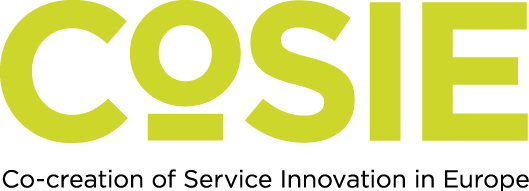Co-creation, Digital Technologies and COVID-19

Can COVID-19 help to introduce a paradigm shift in the use of digital technologies to assist co-creation in disability services? This is one of the slightly surprising themes that evolved from a recent seminar devoted to sharing knowledge and insights from the Swedish pilot work in the context of the ambitions of the CoSIE project.
One of the project’s goals and major challenges has been to explore the use of digital technologies, especially social media, in enhancing citizen power and influence in co-creating service improvements. Digital technologies is a term for electronic tools, systems, devices and resources that generate, store or process data. Well-known examples include social media, online games, multimedia and mobile phones. There are, on the one hand, arguments that digital technologies may serve to facilitate various service improvements and innovations. Yet, scholars have also pointed out that using digital technologies for putting users at the heart of public service innovation is easy to say, but much more difficult to implement.
One of the major reasons may be the specificity of public welfare services, as they often have to do with less independent or resourceful individuals with limited capabilities. Disability services are aimed at supporting individuals with very individual and often complex cognitive and physical impairments to help them live a more independent life and achieve greater wellbeing. The municipal disability services in our Swedish pilot at Jönköping, as likely occurs in Sweden generally, have been struggling with using digital technologies to facilitate co-creation with beneficiaries to improve those services.
The traditional stance in the Swedish pilot has been that digital technologies, such as social media (Twitter, Facebook, Instagram etc.) are less fit for the purpose of engaging these particular users. The uncritical use of digital technologies such as social media in co-creation purposes was thought to be rather counterproductive to the inclusion and empowerment of disability service users a large group of which (ca 70-80 per cent) have severe cognitive disabilities or neuropsychiatric impairments and lack the interest or ability to use such digital technologies.
As disabilities or impairments are so diverse, the argument from service professionals has been that additional resources would be needed to assist each individual user with digital technologies (such as social media) in order to allow everyone to participate fully in a co-creation scenario. Yet another argument against the use of social media has been that it may not offer a meaningful communication platform for citizens with possibilities for sincere feedback and open dialogue that is unhindered by power structures and hierarchies.
The front-line managers and pedagogical tutors were all in agreement with the idea that, for direct co-creation with users with disabilities, they need to prepare ways to express views by ensuring a level playing field in terms of influence whilst guaranteeing personal integrity. Dialogues in small focus groups with neutral but professional assistance has been recognised as one such way, along with assistance in responding to national questionnaires on service quality assessments.
In recent months, the Corona virus has had an unexpected impact on a shift in the use of digital technologies in our pilot municipality. Corona has placed disabled citizens in a position of vulnerability, often isolating them from the outside world and depriving them of their everyday activities. Faced with this environment, service personnel have started, first sporadically but gradually more systematically, using simpler digital technologies such as smart phones and Facetime applications to get in touch with the users on a daily basis. This has been vital for user experiences in assistance services especially now when daily activity centres are closed and visits to residents’ homes are limited.
Service professionals have realised that social contacts are more important than ever before and turned to the proactive use of some digital technologies. “Never had we had such an effective communication with the user as during the latest months of the Corona period” said service managers. They use this simple technique both to see and talk to service beneficiaries about how they feel and how their day has been and what could be improved in the support offered on a daily basis. They have also realised the greater need and potential of digital technologies in the co-creation of meaningful assistance in people’s daily lives. ”Perhaps the client sits somewhere passively, unengaged [in any meaningful activities or ones that might enhance wellbeing] and we could identify that and involve them in co-creating a better day”.
Indeed, service professionals have also experienced a major increase in citizens’ interest, use and effectiveness of digital technologies in communicating vital security information or providing feedback, sometimes even taking to social media. Yet the seminar discussions made clear – a co-creation approach and culture foregoes any techniques and needs to be addressed and worked with first. It includes informing citizens and professionals of the rights of the public to influence and co-determine, using understandable forms of language and communication for each user and exploring co-creation in concrete service practices alongside working to enhance individuals’ abilities.
Can we then say that recent developments indicate readiness for a service culture change towards a greater acceptance of digital technologies? While it is difficult to foretell we also see an increased need to more actively use digital tools for keeping on track with user-based knowledge in adjusting and improving disability services. The common understanding seems to be that the potential of digital technologies needs to be harnessed more for internal communication about the situations of service beneficiaries.
Facetiming with a service manager may be a very simplistic way of sustaining social contact, but it also gives any service professional immediate access to the citizen on a more frequent basis. More importantly, these simple tools seem to have contributed to a growing recognition among service managers and personnel of new and unexpected ways of exploiting digital technologies. Without them the life of the citizen as a service value co-creator would have been far more difficult during the Coronavirus pandemic.
Writer: Inga Aflaki, Karlstad Univeristy
